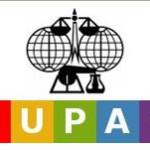- 行业: Chemistry
- Number of terms: 1965
- Number of blossaries: 0
- Company Profile:
The International Union of Pure and Applied Chemistry (IUPAC) serves to advance the worldwide aspects of the chemical sciences and to contribute to the application of chemistry in the service of people and the environment. As a scientific, international, non-governmental and objective body, IUPAC ...
A chemical reaction whose products are chemically identical with the reactants, for example the bimolecular self exchange reaction of CH<sub>3</sub>I with I<sup>-</sup>.
Industry:Chemistry
The situation in which reaction parameters that characterize different bond forming or bond breaking processes in the same reaction have developed to different extents as the transition state is approached along some arbitrarily defined reaction coordinate. For example, in the nitroalkane anomaly, the Brønsted β exponent for proton removal is smaller than the Brønsted α for the nitroalkane, because of imbalance between the amount of bond breaking and resonance delocalization in the transition state. Imbalance is common in reactions such as elimination, addition and other complex reactions that involve proton (hydron) transfer.
Industry:Chemistry
A complex in which one component (the host) forms a cavity or, in the case of a crystal, a crystal lattice containing spaces in the shape of long tunnels or channels in which molecular entities of a second chemical species (the guest) are located. There is no covalent bonding between guest and host, the attraction being generally due to van der Waals forces. If the spaces in the host lattice are enclosed on all sides so that the guest species is "trapped" as in a cage, such compounds are known as "clathrates" or "cage" compounds".
Industry:Chemistry
A complex in which one component (the host) forms a cavity or, in the case of a crystal, a crystal lattice containing spaces in the shape of long tunnels or channels in which molecular entities of a second chemical species (the guest) are located. There is no covalent bonding between guest and host, the attraction being generally due to van der Waals forces. If the spaces in the host lattice are enclosed on all sides so that the guest species is "trapped" as in a cage, such compounds are known as "clathrates" or "cage" compounds".
Industry:Chemistry
The initial slow phase of a chemical reaction which later accelerates. Induction periods are often observed with radical reactions, but they may also occur in other systems (for example before steady-state concentration of the reactants is reached).
Industry:Chemistry
In strict definition, an experimentally observable effect (on rates of reaction, etc.) of the transmission of charge through a chain of atoms by electrostatic induction. A theoretical distinction may be made between the field effect, and the inductive effect as models for the Coulomb interaction between a given site within a molecular entity and a remote unipole or dipole within the same entity. The experimental distinction between the two effects has proved difficult, except for molecules of peculiar geometry, which may exhibit "reversed field effects". Ordinarily the inductive effect and the field effect are influenced in the same direction by structural changes in the molecule and the distinction between them is not clear. This situation has led many authors to include the field effect in the term "inductive effect". Thus the separation of σ values into inductive and resonance components does not imply the exclusive operation of a through-bonds route for the transmission of the non-conjugative part of the substituent effect. To indicate the all-inclusive use of the term inductive, the phrase "so-called inductive effect" is sometimes used. Certain modern theoretical approaches suggest that the "so-called inductive effect" reflects a field effect rather than through-bonds transmission.
Industry:Chemistry
A molecular polarizability effect occurring by the inductive mechanism of electron displacement. The consideration of such an effect and the descriptive term have been regarded as obsolescent or even obsolete, but in recent years theoretical approaches have reintroduced substituent polarizability as a factor governing reactivity, etc. and its parametrization has been proposed.
Industry:Chemistry
The decrease in rate of reaction brought about by the addition of a substance (inhibitor), by virtue of its effect on the concentration of a reactant, catalyst or reaction intermediate. For example, molecular oxygen and p-benzoquinone can react as "inhibitors" in many reactions involving radicals as intermediates by virtue of their ability to act as scavengers toward these radicals.
If the rate of a reaction in the absence of inhibitor is v<sub>o</sub> and that in the presence of a certain amount of inhibitor is v, the degree of inhibition (i) is given by
<center>i = (v<sub>o</sub> - v)/v<sub>o</sub></center>
Industry:Chemistry
A reaction or process generating free radicals (or some other reactive reaction intermediates) which then induce a chain reaction. For example, in the chlorination of alkanes by a radical mechanism the initiation step is the dissociation of molecular chlorine.
Industry:Chemistry
